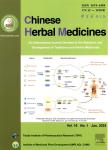Microbial interactions within Chinese traditional medicinal plants
作者机构:Key Laboratory of Bioactive Substances and Resource Utilization of Chinese Herbal MedicineMinistry of EducationInstitute of Medicinal Plant DevelopmentChinese Academy of Medical Sciences&Peking Union Medical CollegeBeijing 100193China School of Pharmaceutical SciencesZhejiang Chinese Medical UniversityHangzhou 310053China
出 版 物:《Chinese Herbal Medicines》 (中草药(英文版))
年 卷 期:2024年第16卷第2期
页 面:169-171页
学科分类:1008[医学-中药学(可授医学、理学学位)] 10[医学]
摘 要:Plants harbor diverse microbes(including bacteria,fungi,archaea,protists,and viruses)both inside and outside their tissues,so called the plant-associated *** of research have demonstrated the importance of plant microbiome in promoting the productivity and health of the plant in natural environment because of their essential functions in improving plant nutrition and plant resistance to biotic and abiotic stresses(Trivedi,Leach,Tringe,Sa,&Singh,2020).Thus,a plant can be regarded as a holobiont comprising the host plant and the associated microbiota(Hassani,Durán,&Hacquard,2018).Within the plant microbiota,mutualistic fungal and bacterial symbionts(*** fungi and Rhizobia)are striking examples of microorganisms playing crucial roles in nutrient acquisition(Martin&van der Heijden,2024)and non-symbitic plant growth-promoting rhizobacteria or fungi(PGPR or PGPF)also have drawn interest due to their ability to improve soil properties and confer stress tolerance in plants(Upadhyay et al.,2023).



